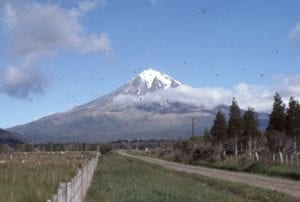Krakatoa, 1883, and the seas shivered. The eruption, one of the largest in recorded history, delivered tsunamis that swept away entire villages around Indonesia and its neighbours; little more than the flotsam and jetsam of nature’s fickleness. Five years later, in the same general neighbourhood, nature was at it again.
Ritter Island, barely a speck on most maps, is a volcanic edifice rooted to the floor of Bismarck Sea between Papua New Guinea and New Britain. In 1888, most of the island slid beneath the waves, creating avalanches of rocky debris. Eye-witness accounts tell of multiple tsunamis over a 3-hour period, and waves at least 8m high with run-ups to 15m above sea level. Ritter Island is an active volcano, but at that time it was not erupting in any major way. The island landslide is probably the largest in recent history – more than 4 cubic kilometres of volcanic rock were dislodged and redeposited along the seafloor. Slope failures like this are called volcanic sector collapses. Continue reading

